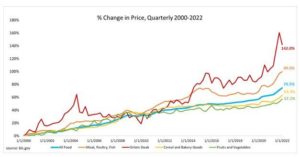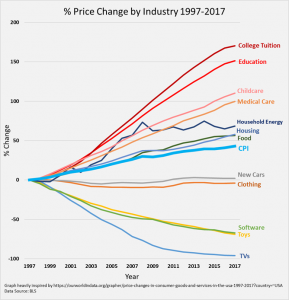With inflation at a forty-year high, it is the topic on everyone’s mind. US core inflation has reached 7.5 percent year over year, and the prices of certain goods, such as used cars and steak, are up as much as 50 percent over the past year. This is a major threat to the current administration, with a recent poll showing that 70 percent of Americans disapprove of Joe Biden’s handling of inflation. Inflation is incredibly unpopular with voters, and there is a strong political incentive to ease the public’s perception of rising prices, either through policies or through modifying the inflation statistics themselves.
One method government has historically used for easing the perception of inflation is to push for the consumption of low-cost goods through government
Articles by Sammy Cartagena
What the United States Can Learn from the European City-States
November 18, 2021Over the past year and a half, we have seen some of the largest divides in US state policy in recent history. Certain states such as California have implemented heavy lockdowns, mask mandates, curfews, and other restrictions for months on end, whereas states such as South Dakota never had an official lockdown to begin with. There is now also the heated policy issue of vaccine mandates, with certain locations such as New York City and Los Angeles requiring proof of vaccination to enter almost any indoor establishment, whereas states such as Florida have outlawed the use of vaccine passports entirely.
Although it is disconcerting that certain states have chosen to enact such draconian policies, we can at least take solace in the fact that this huge divide in state
Two Percent Inflation Is a Lot Worse Than You Think
August 19, 2021With June 2021 CPI growth being at a thirteen-year high, inflation has been on a lot of people’s minds lately. You can’t blame them, seeing as over 23 percent of all dollars in existence were created in 2020 alone. Although future inflation is certainly an important concern, in this article I instead focus on the chronic inflation this country has faced for over a century.
Under normal circumstances, when most people think about inflation, they likely think of a gradual rise in prices averaging out to 2 percent per year. Most people think nothing of this inflation and simply consider it a part of life, or a necessary part of a growing economy.
I am here to argue that not only is this 2 percent inflation number a lie, but also that a more harmful aspect of



